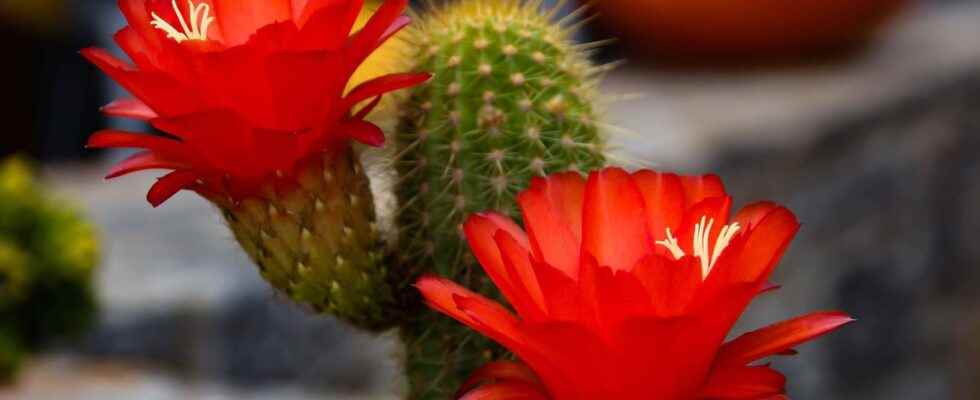All cacti are capable of producing spectacular flowers in spring and summer, if their natural cycle is respected. And to flower, these desert plants need… cold!
You will also be interested
[EN VIDÉO] Interview: how do cacti resist drought so well? Succulents, especially cacti, can survive in extreme climates. Deprived of rain for sometimes several years, these plants have developed interesting strategies to retain water. Futura-Sciences interviewed Jean-Marie Solichon, director of the Exotic Garden of Monaco, to tell us about it.
The morphology cacti is adapted to a drought extended, to heat extreme and strong solar radiation in desert regions. From 2,000 species of cacti that exist, all are native to the southern United States and Mexico. To keep them in good health and make them flower, it is therefore necessary to recreate as much as possible the climatic conditions of their area of origin.
Cacti hibernate in winter
Cacti need to save their energy L’winter for two main reasons: to survive the conditions weather report arid and cold desert American during the winter period, and prepare for the immense expenditure of energy that spring demands. The spring period is synonymous with abundant rains and flowering for the majority of cacti. However, receiving rain and storing it requires energy from the plant, just like flowering. To save energy and overcome the winter weather, cacti naturally enter a dormant phase, also known as “vegetative rest”. Vegetative rest is defined as the period during which a living organism goes to rest by slowing down its vital functions to save energy. It is simply a hibernationlike that of animals that slow down their metabolism Winter. While in most other plants, such as trees, the rest period is perfectly visible (loss of leaves), in cacti, it can go unnoticed. During vegetative rest, there is no growth of the plant. It is the shortening of the duration of the day that triggers the rest period: this phase is triggered when the length of the day is less than 10 hours. However, the plants continue to perform photosynthesis and therefore need to stay in a bright place.
In addition to having to save energy, cacti can no longer tolerate excess water in winter: the amount of water stored in their bodies can reach 50 to 80% of their total weight, and add excess water to them. makes them extremely sensitive to frost. During this dormant period, like the weather desert which is dry from October to February, it is no longer necessary to water the plant which must imperatively live outside, or in a greenhouse. Some species, such as those covered in white silk, are even more sensitive to moisture because their “hairs” retain moisture. More surprisingly, most succulentsof which cacti are a part, have the ability to hibernate when it suits them: if the weather conditions are too hot, too cold, too dry, they automatically go into “standby” and ferment their stomata to limit water loss through sweat.
Dry cold all winter
In the American desert (Arizona, New Mexico, Utah, Nevada, Mexico), winter is marked by a absence of precipitation (January and February being the driest months of the year) and in cold nocturnal. Temperatures are between 0 and 6°C at daybreak, and it can sometimes freeze. Most cacti in the ground can withstand temperatures down to -5°C, and some species such as hedgehog cacti down to -25 to -30°C! If these extreme temperatures do not occur in the American desert, they occur in Canada, where certain cacti have migrated, and survived. But to maintain these plants in winter and hope to obtain flowers in spring, the ideal temperature is 10 to 12 ° C during the day, and 4 to 6 ° C at night, which is the average temperature of the American desert in winter. In the south of France, cacti also find the ideal conditions to survive outside in the ground. In the other French regions, a greenhouse or a garage bright and airy will allow the cacti to have a good winter. Keeping your cacti indoors at 20°C all year round disrupts their natural cycle, deprives them of their vegetative rest and very often leads them to certain death.
It is then the return of the rains from spring that wakes the cacti from their hibernation, the first flower buds generally appearing five days after heavy rains. For the potted cactus, a significant water supplylike the stormy rains of the American desert, is therefore necessary from April to hope to obtain beautiful flowers in the colors fluorescent.
Time-lapse video showing the spectacular flowering of potted cacti. © National Geographic
Interested in what you just read?
